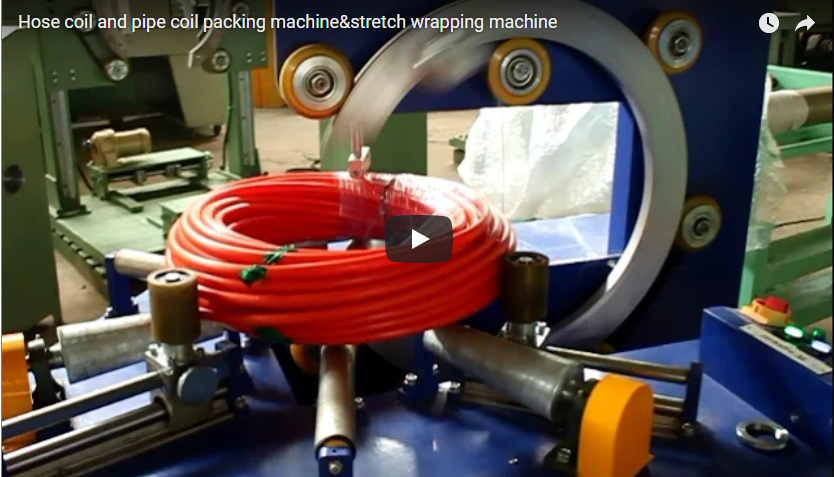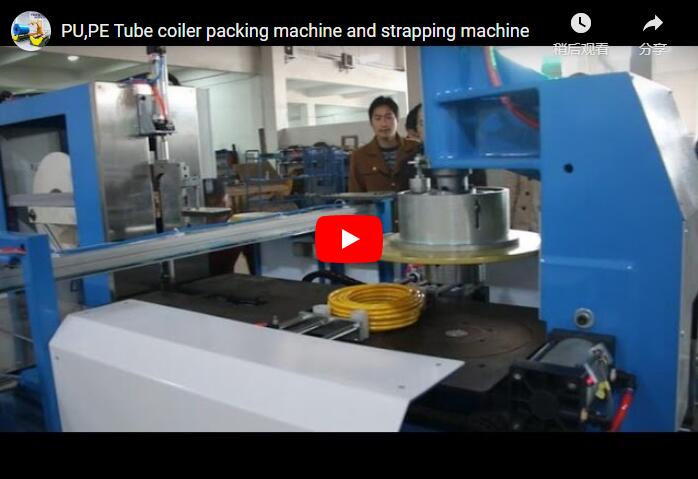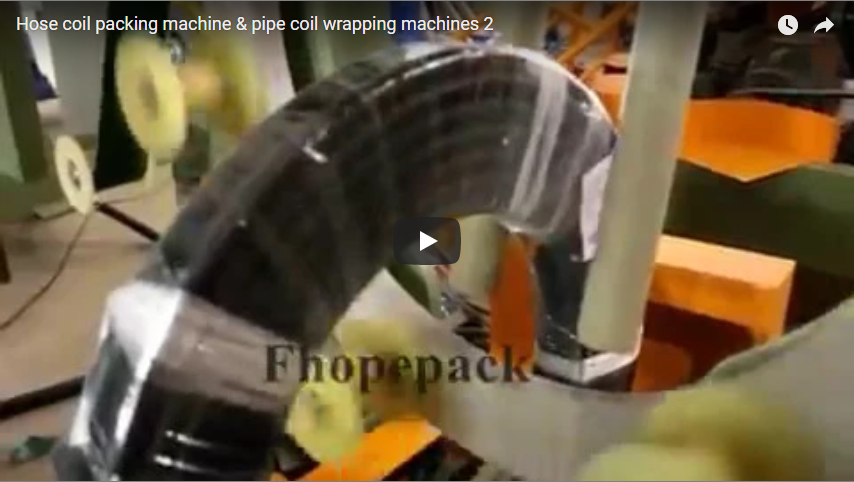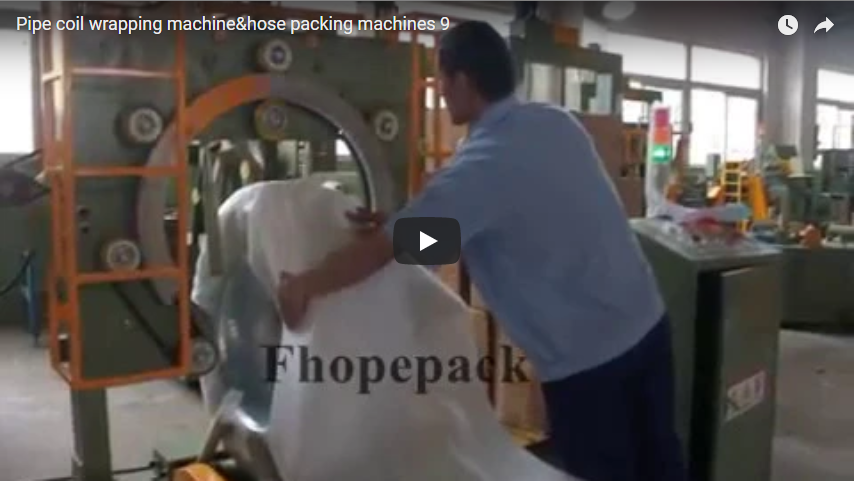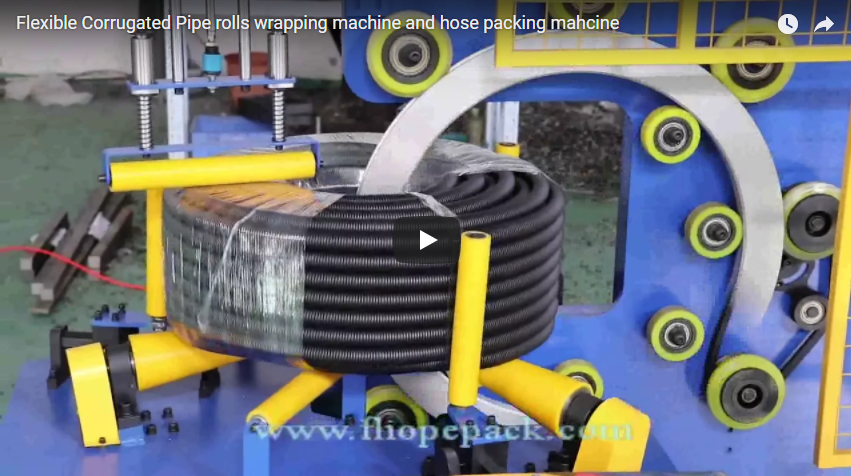Revolutionizing Industrial Packaging: Advanced Automated Wrapping Solutions for Pipe Coils
In today's highly competitive manufacturing landscape, optimizing efficiency and ensuring product integrity during transit are paramount. Manual packaging processes, particularly for cumbersome items like pipe coils, often represent significant operational bottlenecks and hidden costs. This article delves into the strategic advantages of adopting automated horizontal stretch wrapping technology, specifically tailored for pipe coil applications, drawing insights from industry best practices and engineering advancements.
The Persistent Challenge: Inefficiencies in Traditional Coil Packaging
Many manufacturers, including leaders in sectors like automotive parts supply (both OEM and aftermarket), grapple with the limitations of manual packaging. A common scenario involves:
- High Labor Dependency: Manual wrapping requires substantial workforce allocation, leading to escalating labor costs, training overheads, and susceptibility to labor shortages. Research consistently highlights labor as a major operational expense in logistics and packaging (Source: Logistics Management industry reports).
- Inconsistent Quality: Manual application of stretch film or paper often results in uneven tension and coverage. This inconsistency compromises load stability and increases the risk of product damage from moisture, dust, abrasions, or shifting during handling and transportation. Poor packaging directly impacts customer satisfaction and can lead to costly returns or claims.
- Operational Bottlenecks: The time-consuming nature of manual wrapping and the physical effort needed to maneuver heavy coils create significant bottlenecks in the production outflow, hindering overall throughput and delaying shipments.
- Safety Concerns: Manual handling of large coils and repetitive wrapping motions pose ergonomic risks to workers, potentially leading to injuries and associated costs.
These challenges are not merely operational hurdles; they directly impact profitability, scalability, and market competitiveness.
The Strategic Solution: Automated Horizontal Orbital Stretch Wrapping
Addressing these critical pain points requires a shift towards automation. The automatic horizontal stretch wrapper, often referred to as an orbital wrapper, presents a sophisticated and highly effective solution. This technology is engineered to provide consistent, secure, and efficient packaging for ring-shaped or coiled products.
Core Technology and Customization:
Based on established engineering principles often reflected in packaging machinery patents (e.g., relating to film carriage design, tension control mechanisms - see general patent databases like USPTO, EPO), these systems offer robust performance and adaptability:
- Tailored Specifications: Machines are configurable to precise product dimensions:
- Outer Diameter (OD): Accommodating a wide range of coil sizes.
- Inner Diameter (ID): Ensuring the wrapping ring can pass through the coil eye.
- Width/Height: Matching the coil's axial dimension.
- Weight: Designed with appropriate conveyor and structural support for the specified load capacity.
- Advanced Wrapping Process:
- Material Versatility: While commonly using LLDPE stretch film (standard widths like 500mm), systems can be adapted to incorporate other materials like paper layers or VCI (Volatile Corrosion Inhibitor) film for enhanced protection, particularly relevant for metal pipes susceptible to corrosion.
- Automated Film Management: Features include automatic film clamping, precise cutting, and tail wiping mechanisms, ensuring a clean finish and eliminating manual intervention during the cycle.
- PLC Control: Sophisticated Programmable Logic Controllers (PLCs) manage the entire wrapping sequence, allowing for programmable wrap patterns (e.g., number of wraps, overlap percentage) and integration with broader factory automation systems (Industry 4.0 readiness).
- Precision Tension Control: Ensures optimal film stretch and consistent tension throughout the wrap cycle, maximizing load containment while potentially minimizing material consumption compared to manual methods (Source: Packaging Digest articles on film optimization).
Key Engineering Features and Tangible Business Benefits
The adoption of automated horizontal wrapping technology translates into significant operational improvements:
- Drastic Labor Cost Reduction: Automates a labor-intensive task, freeing up personnel for higher-value activities and delivering substantial savings on direct labor costs. ROI calculations often show payback periods well within typical capital investment thresholds for manufacturing equipment.
- Enhanced Throughput and Efficiency: Significantly faster cycle times compared to manual methods dramatically increase packaging throughput, alleviating bottlenecks and enabling faster order fulfillment. Automated infeed and outfeed conveyor systems further streamline the process flow.
- Superior Product Protection & Consistency: Guarantees uniform, tightly wrapped coils with controlled film overlap and tension. This vastly improves load stability and protection against environmental factors and handling stresses, reducing damage rates and associated costs. Consistent package appearance also enhances brand perception.
- Improved Safety and Ergonomics: Eliminates manual lifting and repetitive motions associated with wrapping, creating a safer work environment and reducing the risk of workplace injuries. Systems incorporate safety features like light curtains and physical guarding.
- Optimized Material Usage: Precise control over film stretch and overlap minimizes material waste, contributing to both cost savings and sustainability goals.
- Simplified Operations & Management: User-friendly HMI (Human-Machine Interface) panels allow for easy operation, parameter adjustments, and diagnostics. Integration capabilities simplify production planning and tracking.
Diverse Industry Applications
While exemplified by the automotive parts sector, the benefits of automated horizontal stretch wrapping extend across numerous industries dealing with coiled products:
- Wire and Cable: Securing spools and coils of electrical wire, data cables, and fiber optics.
- Metals Industry: Wrapping coils of wire rod, steel strip, or smaller non-ferrous metal coils.
- Plastics and Rubber: Packaging hoses, tubing, seals, and profiles.
- Building and Construction: Wrapping coils of PEX tubing, conduit, or other flexible piping materials.
- HVAC: Securing coils of copper tubing used in refrigeration and air conditioning systems.
Transform Your Packaging Operations
Investing in an automatic horizontal pipe coil wrapping machine is a strategic move towards greater efficiency, reduced costs, and enhanced product quality. By leveraging automation, manufacturers can overcome the limitations of manual processes and gain a significant competitive edge.
Interested in exploring how this advanced packaging solution can be tailored to your specific operational needs? Contact us today for a detailed consultation, technical specifications, or a customized quote. Our team is dedicated to helping you optimize your packaging processes for maximum efficiency and product protection.
Frequently Asked Questions (FAQs)
1. How exactly does the automated wrapper increase packaging speed?
Automation eliminates manual handling and wrapping time. The machine operates at a consistent, optimized speed with integrated conveyors feeding and removing coils automatically. PLC control ensures the wrapping, cutting, and sealing process is executed in the shortest possible time, significantly boosting throughput compared to manual efforts.
2. Our pipe coils vary greatly in size. How adaptable is the system?
These systems are designed for flexibility. During the specification phase, we define the full range of your coil dimensions (OD, ID, Width) and weights. The machine is then engineered or selected to accommodate this range, often with simple adjustments or pre-programmed settings accessible via the HMI for different product types.
3. What level of maintenance and support is provided?
The machines are built for industrial environments using durable components, requiring standard preventive maintenance (lubrication, inspection). We provide comprehensive documentation, training, and offer ongoing technical support, including spare parts availability and optional service contracts to ensure maximum uptime.
4. Can this wrapping machine be integrated into our existing production line?
Absolutely. These wrappers are designed for integration. Standard conveyor heights, communication protocols (e.g., Ethernet/IP, Profibus), and sensor integration allow for seamless connection with upstream manufacturing processes and downstream palletizing or shipping lines.
5. What types of wrapping materials can be used besides standard stretch film?
The primary material is typically LLDPE stretch film. However, depending on the specific machine configuration and your protection requirements, options exist to incorporate layers of paper, VCI film (for corrosion prevention on metal parts), or other protective sheeting materials within the wrapping cycle.
Explore the future of industrial packaging with our innovative automated solutions. Experience the tangible benefits of enhanced efficiency, reduced costs, and superior product protection.
Contact us directly via email: info@fhopepack.com.

